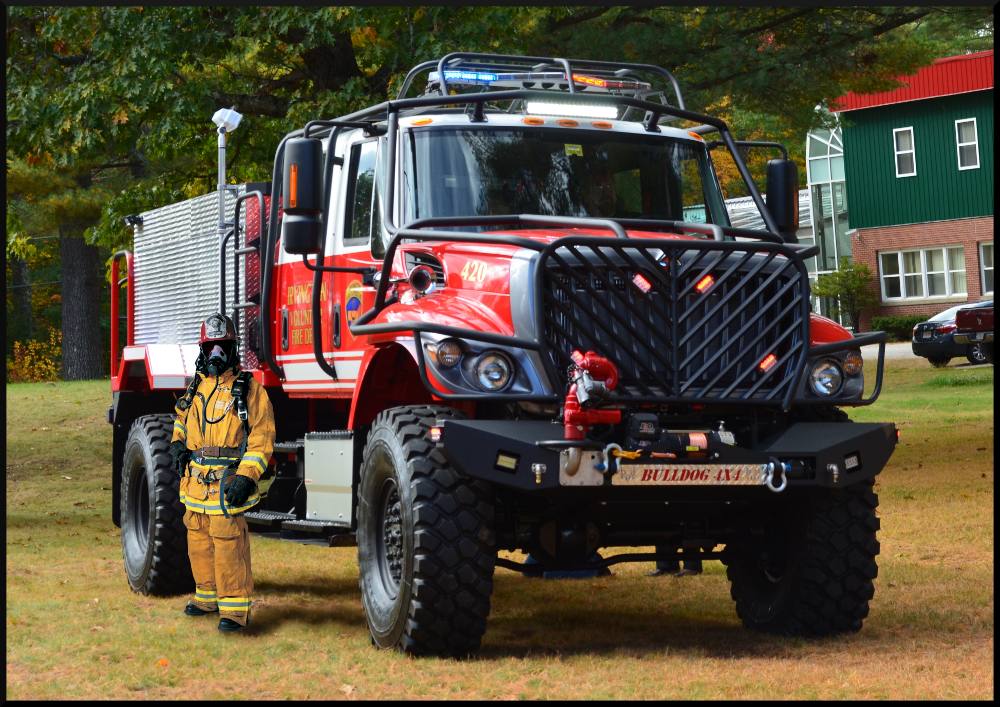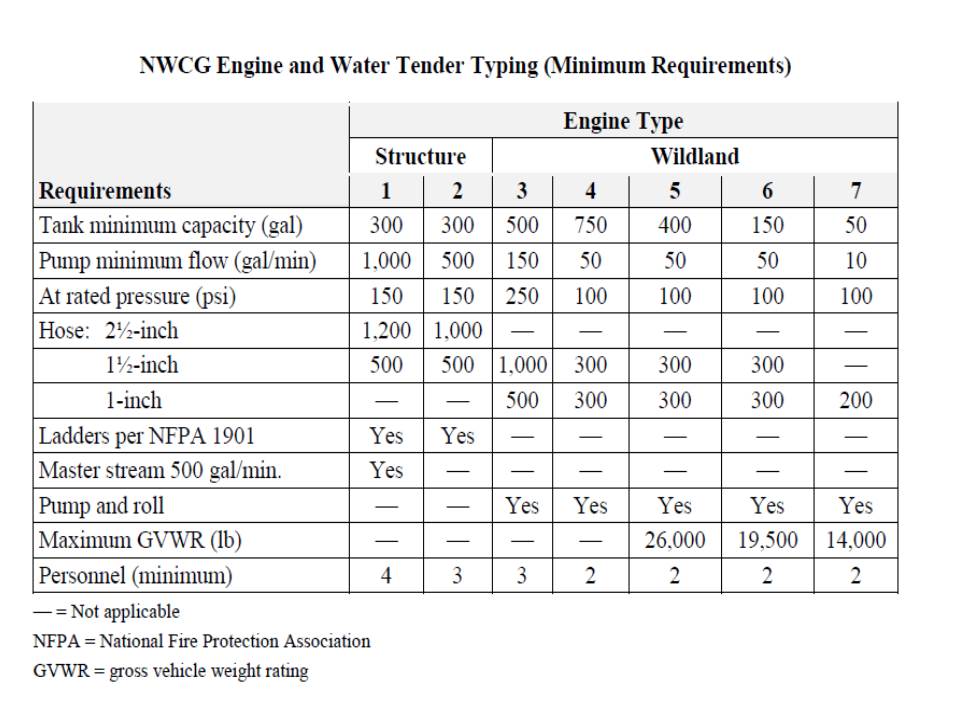A wildland fire engine is specifically designed to assist in fighting wildfires by transporting firefighters to the scene and providing them with access to the fire, along with water and/or other equipment. Most parks are located away from urban areas and maintain their own wildland fire protection and suppression equipment, including wildland fire engines. There are multiple types of wildfire apparatus which are used by the United States Forest Service depending on the scenario at hand. They come in different sizes (Types) depending upon how many gallons of water they hold and the gallons per minute (GPM) the pump can produce. Most wildland fire engines are four-wheel-drive and have off road capability and can thus climb hills and make it through rough terrain.
 Production Bulldog 4X4 Extreme Brush Truck
Production Bulldog 4X4 Extreme Brush Truck
Image courtesy http://www.4x4firetruck.com
Depending on where the engine is positioned in relation to a fire, it may carry as much as twice the national standard in fire hose. In areas where there is rugged terrain that keeps engines from driving directly to the fire, large hose lays are installed to transport water to the fire area. In desert areas with moderate terrain, less hose is used as it is easier to access the fire. Often the technique of pump-and-roll is used where the vehicle drives with the pump engaged while a firefighter uses a hose to spray water on the fire. This pump-and-roll feature allows the engines to make “running attacks” on vegetation fires, a tactic that can help minimize the rate of spread by having a firefighter walk the edge of a fire with a hose line and the engine trailing close behind. One advantage of engine crews is the ability to build “wet line”. A wet line is a fireline that uses water or foam in place of digging to mineral soil. This minimizes the impact to vegetation and limits erosion.
In the fall of 2007, the National Wildfire Coordinating Group agreed on a set of standards for all fire engines that are used for wildland firefighting. As structure engines are sometimes used on wildland fires, though primarily for structure protection, they are also included in the NWCG engine typing. Per the standards there are 7 types of fire engines.

![]()



